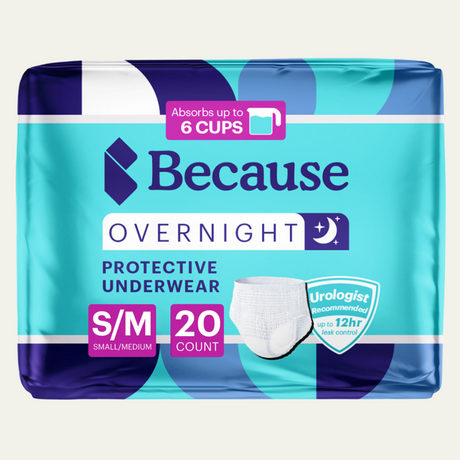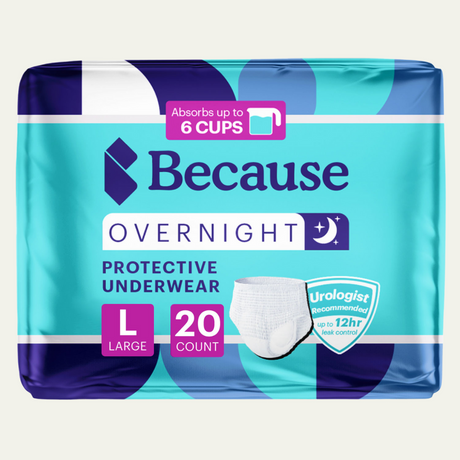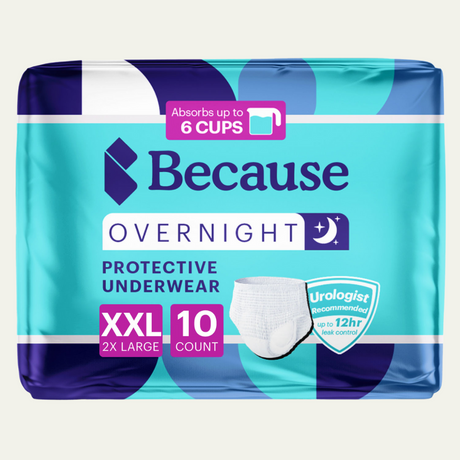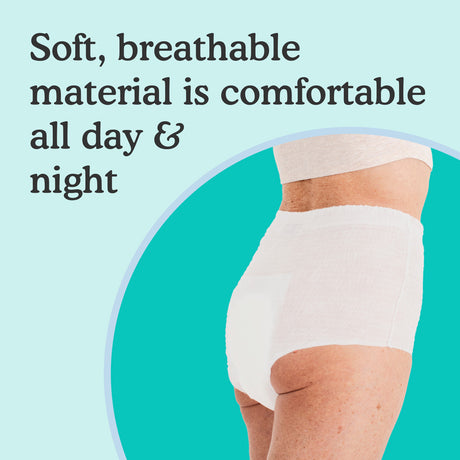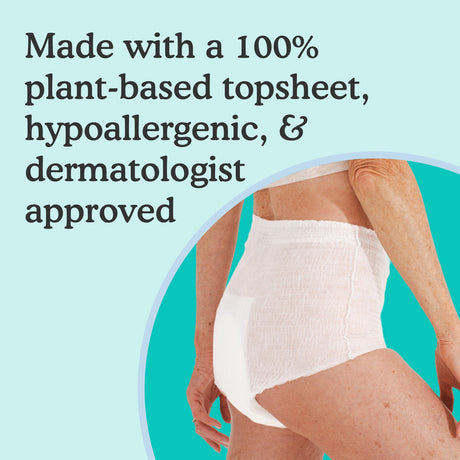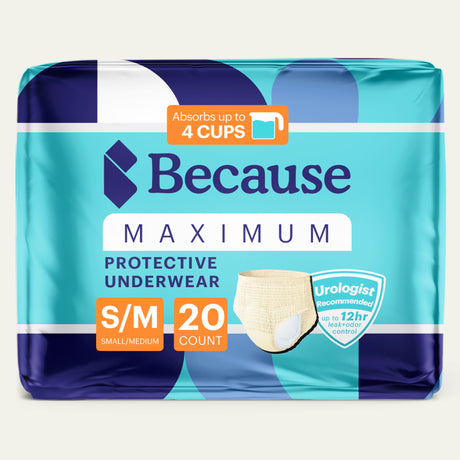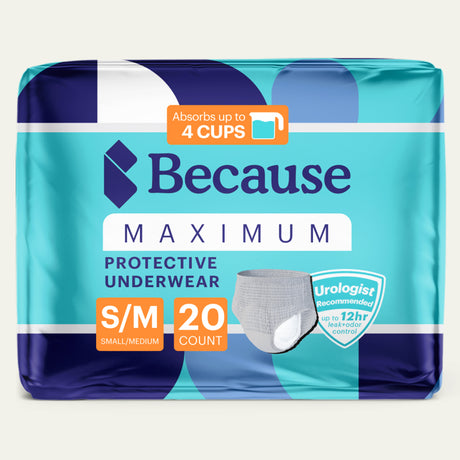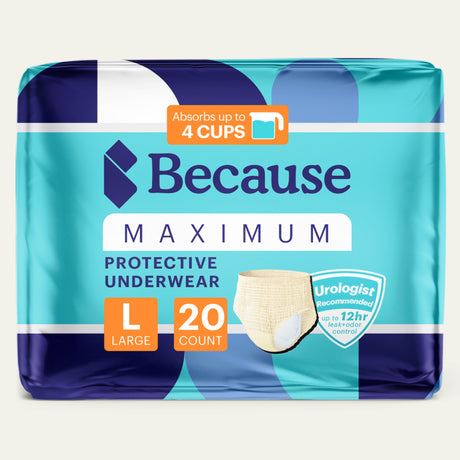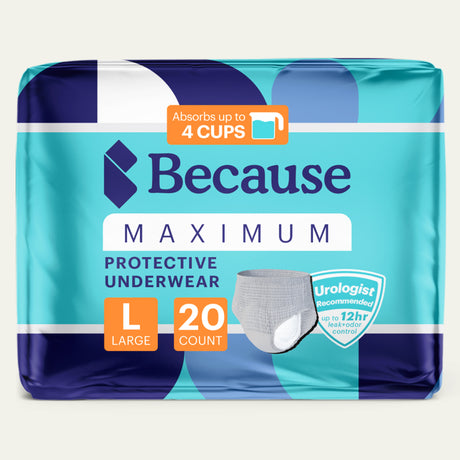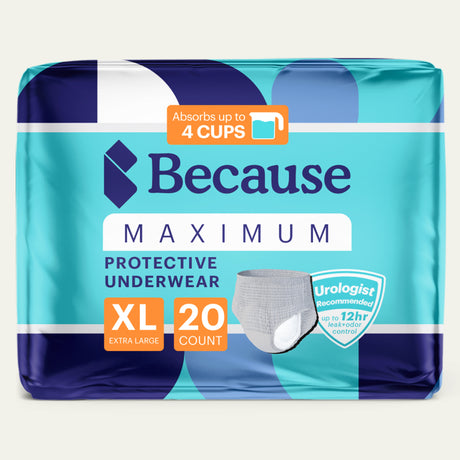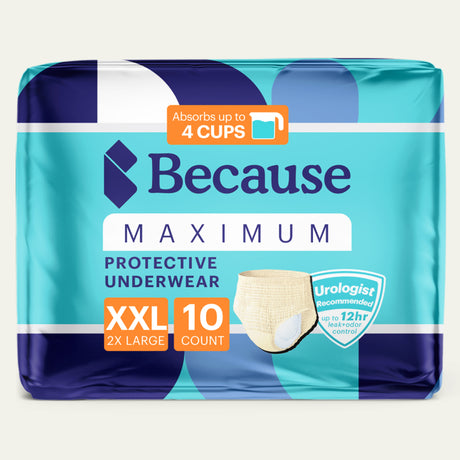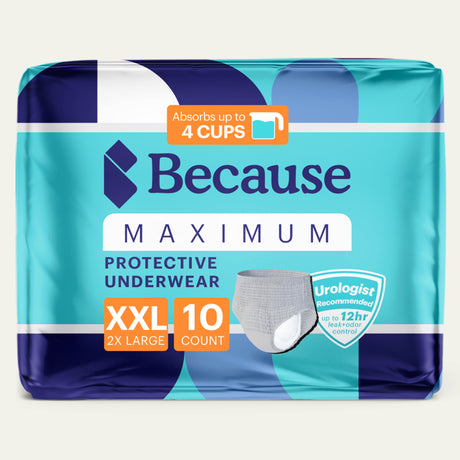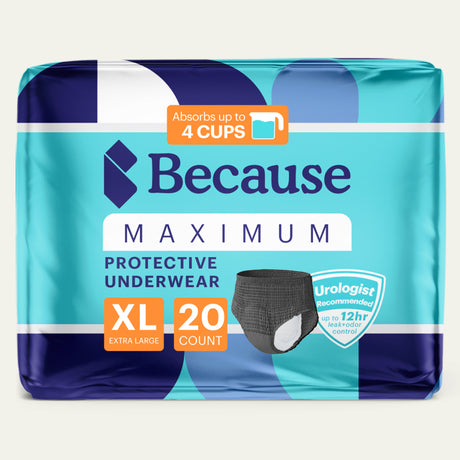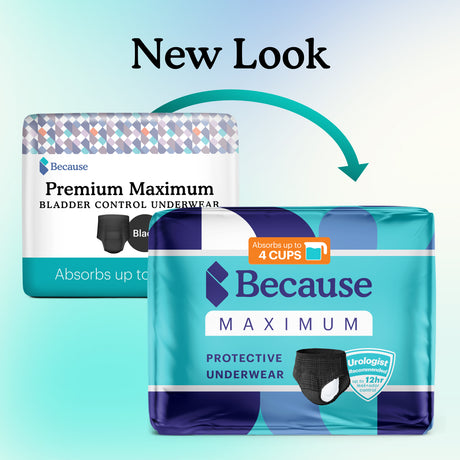Pregnancy and childbirth come with a number of conditions and “side effects” which are often not discussed. More than 30% of pregnant women experience the involuntary loss of urine, but many aren’t prepared. 30% of postpartum women experience leakage during the first three months after their delivery.
If you’re pregnant or planning to become pregnant, there are ways to prevent or reduce the likelihood that incontinence will develop after you give birth. If you are already experiencing incontinence, whether you are currently pregnant or are postpartum, there are ways to improve bladder control problems and manage symptoms.
You don’t need to just live with urinary incontinence, try these tips, exercises, and lifestyle changes to prevent and manage incontinence.

What is Postpartum Incontinence?
Postpartum urinary incontinence refers to the involuntary leakage of urine that occurs after giving birth. Postpartum incontinence can range from mild to severe. The main cause of postpartum incontinence is the strain placed on the pelvic floor muscles during pregnancy and childbirth.
These muscles, which support the bladder and other pelvic organs, may become weakened or stretched during the process of carrying and delivering a baby. As a result, women may experience bladder control problems leading to leaks of urine during everyday activities such as sneezing, coughing, laughing, or exercising.
There are many different types of incontinence but this type of incontinence is often referred to as stress incontinence. Another common type of incontinence that develops after childbirth is overactive bladder, or OAB. Overactive bladder refers to incontinence that causes you to feel the sudden urge to urinate several times a day requiring frequent trips to the bathroom.
Another type of incontinence that can develop due to pregnancy and vaginal delivery is fecal incontinence. Fecal incontinence refers to incontinence that affects the bowels as opposed to the urinary tract.
While postpartum incontinence can be distressing and feel overwhelming, the good news is that it is often temporary and can be effectively managed with a combination of the right incontinence products and treatment regimens.
How Long Does Postpartum Incontinence Last?
The duration of postpartum incontinence can vary from person to person, but generally the condition will improve within a few weeks to a few months. Women should speak with their doctor or other healthcare professional if they are not seeing any improvement at around the 6 week mark.
However, for some women the pelvic floor will become damaged. A healthcare professional can work with you to determine a course of treatment to minimize the chance the incontinence will become a permanent problem. It is very important that you discuss any changes or concerns with your healthcare provider as soon as possible. The quicker you receive treatment, the more likely you can achieve a full recovery.

Risk Factors for Postpartum Incontinence
Certain lifestyle and historical factors can contribute to the development of postpartum urinary incontinence. For example, you are more at risk if you are older, struggle with obesity, smoke, or have a family history or personal prior history of incontinence.

Causes of Postpartum Incontinence
At its core, incontinence is the result of damage or weakness to the pelvic floor. There are several ways this can happen throughout pregnancy and during birth.
Firstly, vaginal delivery, particularly if it involves a prolonged pushing stage, difficult labor, or the use of forceps or vacuum extraction, can increase the likelihood of pelvic floor muscle damage, leading to incontinence. Women who go through a vaginal delivery have a 50% greater chance of developing incontinence than women who deliver via Cesarean section or c-section. Having an episiotomy can also increase the risk of developing incontinence.
Second, if you have had children in the past or are having a larger than average baby you are also more likely to develop incontinence.
Prevention and Management of Postpartum Incontinence
Prevention and management of postpartum incontinence involve a multi-faceted approach aimed at strengthening the pelvic floor muscles and stimulating pelvic nerves to promote overall bladder health.
Prevention
One of the best things pregnant women can do to prevent leaks during and after pregnancy is to engage in regular pelvic floor therapy sessions, also known as Kegel exercises. Kegel exercises can help maintain muscle tone and prevent weakness.
Check out this article on strengthening your pelvic floor for exercises to get you started
Talk to your doctor about the best exercises for you or see a pelvic floor physical therapist for individualized physical therapy treatment and valuable insights into proper technique and exercise progression.
It’s also important to lead a healthy lifestyle by maintaining a healthy weight, avoiding smoking, staying hydrated, engaging in regular exercise, and limiting your intake of caffeinated and carbonated beverages.
Seeking guidance from a healthcare professional or a pelvic floor physical therapist can provide valuable insights into proper technique and exercise progression. Maintaining a healthy weight, avoiding smoking, and practicing good hydration habits can also support bladder health.
Finally, take care and note of your bladder health. Don’t rush bathroom visits and don’t hold your urine. Let your urine flow at its own speed, don’t push it out with your pelvic floor. Make sure to treat any and all infections (such as UTIs or yeast infections) promptly and before they turn into serious problems. Document any leakage you experience so you can report this information to your doctor. It's crucial to remember that seeking professional help and support is essential in developing an individualized treatment plan for prevention and management, enabling women to regain confidence and enjoy their postpartum journey.
Management
If you are already experiencing incontinence, whether during pregnancy or postpartum, kegel exercises are still a great way to rebuild strength in your pelvic floor and reduce leaks. Talk to your doctor about setting up an appointment with a pelvic floor specialist so you can begin rebuilding your pelvic floor with proper technique and monitoring.
Another important behavioral technique is bladder training.
To utilize this technique follow these steps:
- Empty your bladder as soon as you wake up in the morning
- Set specific times that you will go to the bathroom and stick to them. Go the bathroom at these times and empty your bladder even if you do not feel the urge to urinate (Note: Only follow this during daytime)
- If you feel the urge during a time outside of your scheduled times, resist the urge to go until the next scheduled time
- Once you have accomplished the initial goal of sticking to your schedule, gradually increase the time between bathroom trips by 15 minutes.
To determine the initial times you will go to the bathroom, work with your doctor on what will work best for you. It will take 6-12 weeks for you to retrain your bladder using this technique so don’t lose hope! Stick to your schedule and give it a chance to work.
Bladder training is also particularly effective when used alongside pelvic floor exercises.
Finally, make sure you are getting enough fiber in your diet and avoiding constipation. Constipation puts pressure on your bladder and urinary tract and urethra contributing to urinary incontinence.
To manage symptoms, there are a variety of products that can help you avoid leaking onto clothes, keep your skin clean and dry, and reduce odors.
First, it’s important to mention that menstrual pads should NOT be used for urinary incontinence. Menstrual pads are not designed to collect urine and do not have the material or design to quickly wick away urine which causes it to remain on the skin for a longer period of time.
Wearing menstrual pads as urinary pads can lead to skin rashes and infections due to the lack of quick wicking fabric. Additionally, the moisture and infected skin could contribute to urinary tract infections.

If you are experiencing minor leaks, there are incontinence pads which are built similarly to menstrual pads but designed to collect urine. These pads come in a variety of different absorbency levels, sizes, materials, and brands.

For heavier leaks, you should use protective underwear. Protective underwear also comes in a variety of absorbency levels as well as shapes, materials, and odor control capabilities. You may need to try a few different types and brands before you find the right fit and type for you.
Check out this article on how to find the right fit for you
In addition to pads and underwear, there are also a few other OTC tools and products you can use to manage your symptoms and improve your comfort.
Pessaries: a pessary is a device that is inserted into the vagina to apply pressure to the urinary tract and urethra. This provides support needed to tissues displaced by pelvic organ prolapse or weakened pelvic muscles and nerves.
Bed Protectors: bed protectors are urine proof pads that you sleep on to prevent your mattress or bedding from becoming soiled from an accidental leakage.

Bladder supplements: bladder supplements are a natural way to help reduce leaks and promote a healthy bladder. Look for supplements with ingredients such as cranberry, probiotics, pumpkin seed, and soy germ.
As always, be sure to talk to your doctor about any treatment options you are considering or would like to explore. Your doctor is an excellent resource on the best treatment option for your body and type of incontinence.
Medications: There are several medications on the market that your doctor may prescribe to help manage the symptoms of incontinence. The most common types of medications prescribed are: antimuscarinics/anticholinergics, beta-3 antiadrenergics, and antispasmodics.
In addition, other medications such as botox (for long term symptoms of incontinence), hormones (such as estrogen), Sudafed, and Imodium (for occasional loss of bowel control) can be prescribed.
Finally, managing postpartum incontinence can be a difficult and emotional journey. Consider joining a support group for people dealing with the same condition. There are support groups online as well as in person. Ask your doctor for recommendations for in person support networks or speak with a counselor.
If you feel more comfortable joining an online group, look on Facebook. Many support groups are built and managed there.
If you're struggling with incontinence, join one of our private support groups today!
Women's Incontinence Support Group
Men's Incontinence Support Group
Sources:
UT Southwestern Medical Center. (n.d.). Leakage and incontinence during and after pregnancy. Retrieved from https://utswmed.org/medblog/leakage-incontinence-during-after-pregnancy/#:~:text=More%20than%20a%20third%20of,just%20live%20with%20urinary%20incontinence.
Verywell Family. (n.d.). Postpartum incontinence: Causes, treatment, and management. Retrieved from https://www.verywellfamily.com/postpartum-incontinence-4580237
Medical News Today. (n.d.). Urinary incontinence after childbirth: Causes, treatment, and prevention. Retrieved from https://www.medicalnewstoday.com/articles/urinary-incontinence-after-childbirth#treatment
Saint Luke's Health System. (n.d.). Understanding urinary incontinence after pregnancy. Retrieved from https://www.saintlukeskc.org/health-library/understanding-urinary-incontinence-after-pregnancy
University of Colorado Urogynecology. (n.d.). Incontinence after childbirth. Retrieved from https://urogyn.coloradowomenshealth.com/conditions/bladder/incontinence-after-childbirth.html#:~:text=Many%20factors%20can%20contribute%20to,unique%20hormones%20produced%20in%20pregnancy.
WebMD. (n.d.). Urinary incontinence during pregnancy. Retrieved from https://www.webmd.com/urinary-incontinence-oab/pregnancy
UT Southwestern Medical Center. (n.d.). Leakage and incontinence during and after pregnancy. Retrieved from https://utswmed.org/medblog/leakage-incontinence-during-after-pregnancy/
Moreland OB-GYN Associates. (n.d.). Pregnancy incontinence: Prevention and treatment methods. Retrieved from https://www.morelandobgyn.com/blog/pregnancy-incontinence-prevention-and-treatment-methods
UCSF Health. (n.d.). Bladder training. Retrieved from https://www.ucsfhealth.org/education/bladder-training
Aeroflow Urology. (n.d.). 6 ways to successfully manage postpartum incontinence. Retrieved from https://aeroflowurology.com/blog/6-ways-to-successfully-manage-postpartum-incontinence
Medindia. (n.d.). Stress incontinence - Drugs for its treatment. Retrieved from https://www.medindia.net/drugs/medical-condition/stressincontinence.htm
National Association for Continence (NAFC). (n.d.). Pharmaceutical treatment options. Retrieved from https://nafc.org/pharmaceutical/


